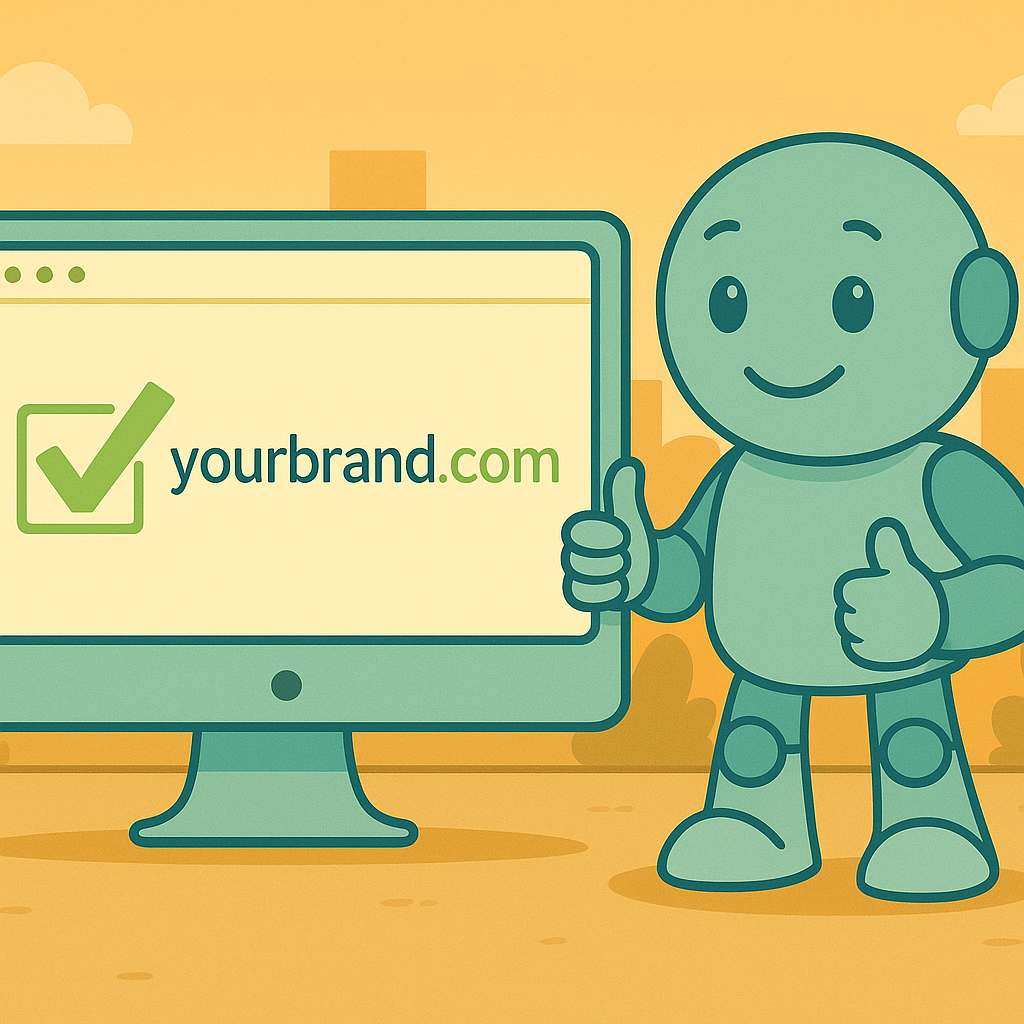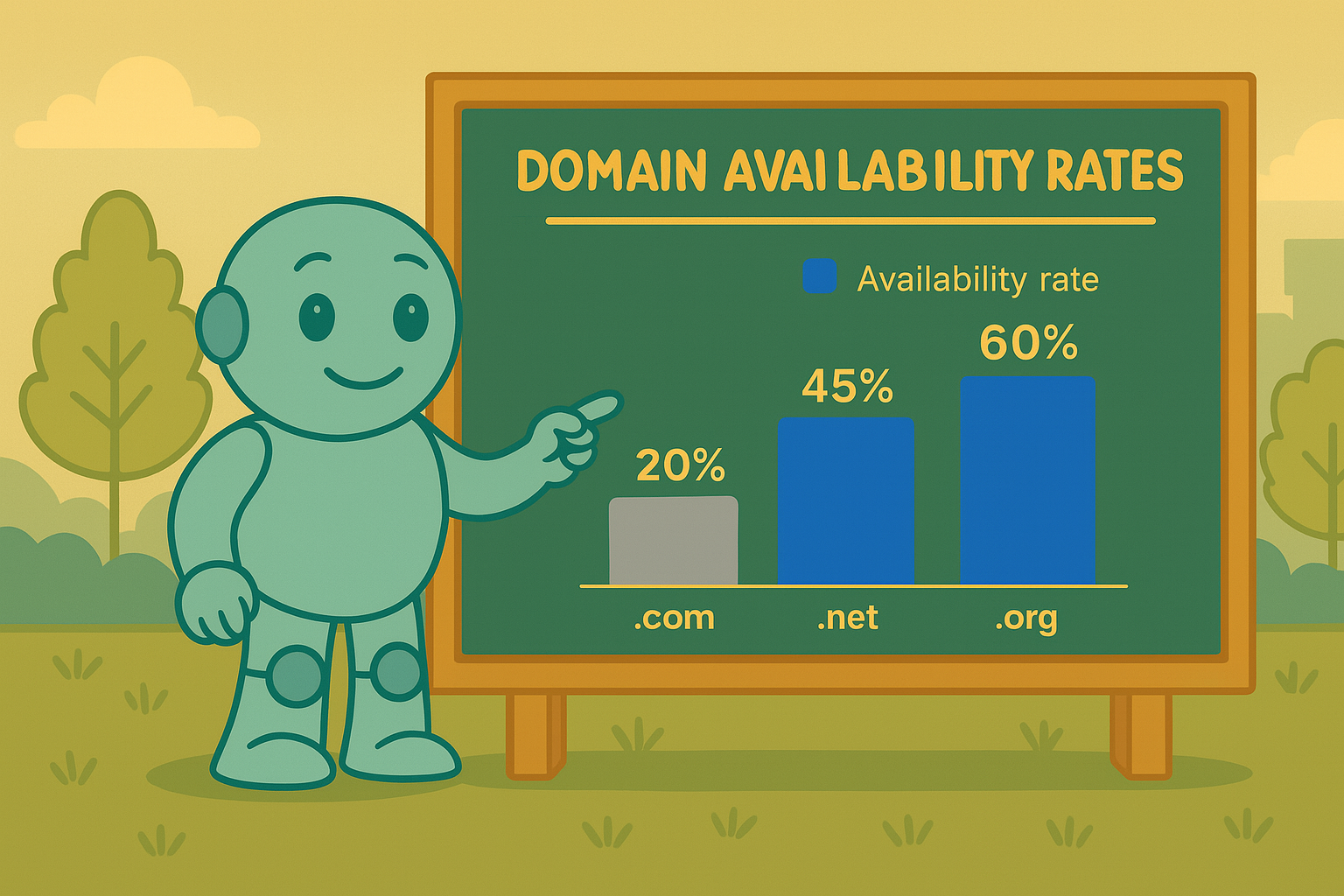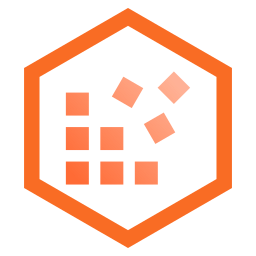Check Domain Availability & Find Your Perfect Name
Grabbing the right domain name isn't just a task to check off a list; it’s the very first move you make in building your digital identity. Think of your domain as your online address—it's a foundational piece of your brand that tells both customers and search engines what you're all about.
Your First Step in Building a Digital Identity
Whether you're launching a business, a startup, or even just a personal brand, securing the right domain is the bedrock of your online presence. It's so much more than a simple web address. From day one, this asset shapes your branding, influences your search engine optimization (SEO), and helps build trust with your audience. In an internet that's more crowded than ever, a smart approach to finding your name is non-negotiable.
The competition for memorable domains is intense. As of the first quarter of this year, there were roughly 368.4 million domain name registrations across all top-level domains (TLDs) worldwide. That number reflects a 1.7% increase year-over-year, which shows just how many businesses and individuals are constantly carving out their space online. You can find more insights on this steady growth in recent industry reports.
This ever-expanding number is precisely why a deliberate process to check domain availability is so critical—chances are, your first idea is already gone.
Why Your Domain Choice Matters
A great domain does more than just get people to your website; it sets the tone and builds credibility from the first click.
Here’s why it's such a big deal:
- Branding and Memorability: A short, catchy, and relevant domain is far easier for people to remember and share. It’s the sign above your digital storefront.
- SEO Performance: Weaving a relevant keyword into your domain can give you a small but helpful SEO boost, signaling to search engines what your site is about.
- User Trust: A professional-sounding domain with a familiar extension like .com almost always feels more trustworthy to first-time visitors compared to one with a strange or clunky TLD.
For instance, a tool like NameRobot’s domain checker gives you a clean, straightforward way to handle this crucial first step.

As you can see, the tool instantly shows which extensions are available, letting you quickly pivot if your top choice isn't on the table.
How to Use a Domain Checker Effectively
Using a domain checker effectively is more than just plugging in a name and hitting 'search'. It’s really a strategic first step in building your online identity, and how you approach it can make a big difference. When you check if a domain is free, you’ll get one of a few results, and each one points you in a different direction.
Let’s say you’re launching an online store for custom gadgets and your heart is set on "brightwidgets.com". You type it in, and... it's taken. It's a common story, but it’s definitely not a dead end. This is where you get to put your creative hat on and really lean into the tool's features.
Key Takeaway: Seeing that a domain is "taken" isn't a failure—it's an opportunity. This is your chance to discover an even more unique and brandable name that could serve your business better down the road.
Interpreting Your Search Results
To move forward efficiently, you need to know exactly what the results mean. The terminology is straightforward, but the implications for your brand and budget can be huge.
Here’s a quick breakdown:
- Available: This is your green light. The domain is unregistered and you can buy it on the spot. If you find your first choice is available, my advice is to register it immediately before someone else does.
- Taken: This means someone else already owns the domain. Now you have a choice: head back to the drawing board for a new name or see if the current owner has listed it for sale on a domain aftermarket.
- Premium: The domain is for sale, but with a hefty price tag. These are typically short, highly memorable, or keyword-rich names that registries or resellers have identified as high-value assets. A premium domain can easily run into the thousands of dollars, so you’ll need to weigh that against your budget.
Moving Forward When Your First Choice Is Gone
So, "brightwidgets.com" is off the table. What now? Instead of just trying random variations, it's time for a more structured approach. A good domain checker will often suggest alternatives right away. You might see options that add a verb, like GetBrightWidgets.com, or perhaps a location-specific one, like BrightWidgetsNYC.com.
This is also the perfect time to explore different domain extensions. While .com is the classic go-to, a more modern extension like .io or .tech could be a fantastic fit for a gadget brand. NameRobot’s checker is great for this, as it will show you a whole list of available Top-Level Domains (TLDs) for your chosen keyword.
For a deeper dive, our guide on NameRobot’s domain availability checker has even more tips. By using these strategies, a simple availability check becomes a powerful part of your branding process.
Choosing the Right Domain Extension For Your Brand
You've got a great name in mind—now for the final piece of the puzzle: the extension. That little bit after the dot, known as the Top-Level Domain (TLD), is more than just a technical requirement. It’s a powerful signal to your audience, shaping their first impression of your brand. For decades, .com has reigned supreme, and for good reason. It’s the one everyone knows and trusts.
But the internet has gotten crowded. With around 364.3 million domains registered globally, landing that perfect .com is tougher than ever. This scarcity has led to a boom in alternatives. In fact, country-code TLDs (ccTLDs) have recently grown by 2.5 million registrations, and new generic TLDs (gTLDs) have jumped by a staggering 5 million. It's clear that businesses are looking beyond the traditional choices, and you can learn more about these evolving domain industry trends to see where things are headed.
Just look at how much harder it is to find an available .com compared to other popular options.

The data speaks for itself. While .com is always a great catch, you’ll find far more open doors when you check domain availability for extensions like .net or .org.
How To Pick the Best TLD for Your Audience
So, which one is right for you? It all comes down to your brand’s mission and who you’re trying to reach.
For example, a plumber in Manchester would benefit immensely from a .co.uk domain. It instantly tells local customers, "I'm one of you," which builds immediate trust and relevance. On the flip side, a cutting-edge software startup might find a modern extension like .io or .ai feels more authentic to their tech-savvy identity. An online boutique? A .shop or .store TLD makes its purpose crystal clear right in the URL.
To help you weigh your options, this table breaks down the most common extension types and what they signal to the world.
Comparing Popular Domain Extension Types
| Extension Type | Best For | Key Benefit | Consideration |
|---|---|---|---|
| Traditional gTLD (.com, .org, .net) | Most businesses, especially with global ambitions. | High trust, recognition, and credibility. | .com domains are highly saturated and can be expensive. |
| Country-Code TLD (.uk, .ca, .de) | Local businesses or brands targeting a specific country. | Signals local presence and can improve regional SEO. | May limit perceived scope if you plan to expand globally. |
| New gTLD (.shop, .app, .photo) | Niche industries, startups, and creative brands. | Highly descriptive, memorable, and often more available. | Less traditional; some users may not be as familiar with them yet. |
| Sponsored TLD (.gov, .edu, .museum) | Specific organizations that meet strict criteria. | Carries a high degree of authority and trust. | Eligibility is restricted to qualified entities. |
Ultimately, the best extension is the one that fits your brand like a glove. It should feel natural, make sense to your customers, and support your long-term goals.
Don't overlook the newer TLDs. While a .com has undeniable authority, a creative gTLD can make your domain shorter, more memorable, and perfectly descriptive of what your business actually does.
Here's a simple way to think about it:
- Aiming for global reach? Try to secure the .com if you can.
- Focused on a local market? A country-specific TLD (like .ca or .de) is your best bet.
- In a specific industry? Explore the new gTLDs (like .photo or .design) to stand out.
What to Do When Your Perfect Domain Is Taken
It’s a familiar gut-punch for anyone starting a new venture. You’ve found the perfect name, you go to check its availability, and... it's already registered. It's easy to get discouraged, but don't hit the brakes just yet. Think of this as a chance to get even more creative and find a name that’s potentially stronger.
Instead of scrambling for awkward variations, take a step back and approach it strategically. A simple tweak can sometimes do the trick. For example, adding an action-oriented verb can be surprisingly effective. If "artisanbakes.com" is gone, what about "getartisanbakes.com" or "tryartisanbakes.com"? They're direct, memorable, and get the job done.
Brainstorming Creative Alternatives
Another solid tactic is to add a word that clarifies what your brand is all about. This can actually strengthen your brand identity. Think about what makes you unique—are you local, fast, premium, or focused on a specific community?
Here are a few paths you can explore:
- Go Local: Adding your city or neighborhood can be a huge win, especially for service-based businesses. Think "brooklynartisanbakes.com."
- Add a Simple Qualifier: Sometimes, all it takes is a word like "The," "My," or "Shop." A classic like "theartisanbakes.com" can instantly become available.
- Revisit the TLD: As we covered earlier, don't forget about other extensions. A name like "artisanbakes.shop" is incredibly clear and modern.
Finding out your first-choice domain is taken isn't a dead end—it's a branding exercise. It forces you to get crystal clear on your unique value, which often results in a name that’s even more descriptive and powerful.
And remember, you don't have to do all the heavy lifting yourself. AI-powered tools, like those inside NameRobot, are brilliant for uncovering clever combinations you might never have thought of. They can save you hours of frustrating manual searches. As a last resort, you can check the domain aftermarket to see if the current owner is willing to sell, but just be aware that this route often comes with a much higher price tag.
So, you've found a domain name that’s available. That’s a great start, but it's only half the battle. A truly effective domain isn't just an address; it's a powerful brand asset that works for you long-term. Before you rush to register, it pays to run your final candidates through a quick quality check.
The best domains are often the simplest. Think about it: could you easily tell someone your website name over the phone without having to spell it out? If you're explaining hyphens, numbers, or tricky words, you're creating friction. A name like nycdrive.com is punchy and sticks in your head, while something clunky like premium-car-maintenance-new-york.com is a mouthful and easily forgotten.
Make It Brandable and Intuitive
Your domain name should feel like a brand, not just a literal keyword string. This is your chance to get creative. Brandable names have a certain ring to them; they're unique, catchy, and distinctive without needing to spell out exactly what you do. For a much deeper dive on this, our guide on how to choose a brand name is packed with solid strategies.
A pro tip I always give is to steer clear of hyphens and numbers. They're a common cause of typing errors and can make a domain look a bit dated or less trustworthy. Sticking to letters helps create a clean, professional name that people can share with confidence.
Final Check: Your domain is more than just a URL—it’s the cornerstone of your brand identity. Make sure it’s easy to say, easy to type, and easy to remember.
The hunt for a good name is getting more competitive every day. The market is projected to swell from 378.6 million registered domains to an estimated 459.9 million within five years. This explosion in registrations underscores just how crucial it is to check for availability and lock down a strong name before your best options are gone. You can find more details on this market expansion if you want to understand the trends.
Common Questions About Domain Availability
When you're trying to find the perfect domain, a few questions almost always pop up. I've heard them countless times from people just getting started. Even after you've checked if your name is available, things can still feel a bit fuzzy. Let's walk through some of the most common sticking points.
"Is Domain Registration the Same as Web Hosting?"
This is probably the biggest point of confusion, and the answer is a definite no. It's a critical distinction to understand.
Here’s an analogy I find helpful: your domain name is your street address, but your web hosting is the actual plot of land and the house built on it. The address simply points people to the right place; the hosting is where all your website files and content actually live.
You need both for a live website. You'll get the name from a registrar and the hosting from a hosting provider. Sometimes the same company sells both, but they are fundamentally two different services doing two very different jobs.
A Pro Tip from Experience: I often recommend keeping your domain registration and web hosting with separate companies. It gives you far more flexibility and control. This way, you're not locked into one provider for everything, which can save you a lot of headaches down the road if you ever decide to switch.
What Happens When a Domain Expires?
People often wonder if an expired domain immediately becomes fair game. Not exactly. The process isn't instant, and there's a system in place.
When a domain expires, it first enters a grace period. This typically lasts about 30 days, giving the original owner a chance to renew it. After that, it often goes into a redemption phase (which can come with a hefty fee) before eventually being released back to the public pool of available names.
Trying to snag an expiring domain is a bit of a gamble. The whole cycle can take weeks or even months, and there's no guarantee you'll get it. It’s always a better strategy to find a fantastic, available name from the get-go.
Can I Own a Domain Without a Website?
Absolutely, and it's a very smart move. Think of it as securing your digital real estate ahead of time.
Registering a domain name reserves your spot on the web, ensuring no one else can take it. This is perfect if you have a great idea for a business or project but aren't quite ready to build the full website. You can lock in your brand name now and build the site when the time is right.
For a deeper dive into the final steps, our guide on how to register a domain name covers everything you need to know.
Ready to find and secure your perfect domain? Use NameRobot’s powerful tools to check availability and discover unique, brandable names in minutes. Find your domain with NameRobot today!















